Pendentive
In architecture, a pendentive is a constructional device permitting the placing of a circular dome over a square room or of an elliptical dome over a rectangular room.[1] The pendentives, which are triangular segments of a sphere, taper to points at the bottom and spread at the top to establish the continuous circular or elliptical base needed for a dome.[2] In masonry the pendentives thus receive the weight of the dome, concentrating it at the four corners where it can be received by the piers beneath.
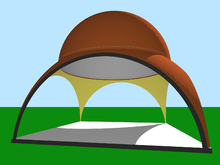
| Look up pendentive in Wiktionary, the free dictionary. |
Prior to the pendentive's development, builders used the device of corbelling or squinches in the corners of a room. Pendentives commonly occurred in Orthodox, Renaissance, and Baroque churches, with a drum with windows often inserted between the pendentives and the dome. The first experimentation with pendentives began with Roman dome construction in the 2nd–3rd century AD,[3] while full development of the form came in the 6th-century Eastern Roman Hagia Sophia at Constantinople.[4]
Gallery
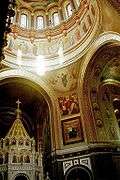 Arches (left and right), dome (top) and pendentive (centre) in Moscow Cathedral
Arches (left and right), dome (top) and pendentive (centre) in Moscow Cathedral_%E2%80%93_frs-002.jpg) Holy Trinity Church, Fulnek, Czech Republic
Holy Trinity Church, Fulnek, Czech Republic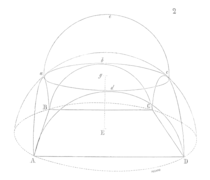 Formation of a pendentive. Eugène Viollet-le-Duc, 1856
Formation of a pendentive. Eugène Viollet-le-Duc, 1856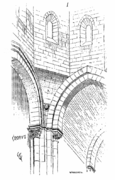 A pendentive, labelled A. Illustration of a church in Nantua.
A pendentive, labelled A. Illustration of a church in Nantua. Pendentive structure
Pendentive structure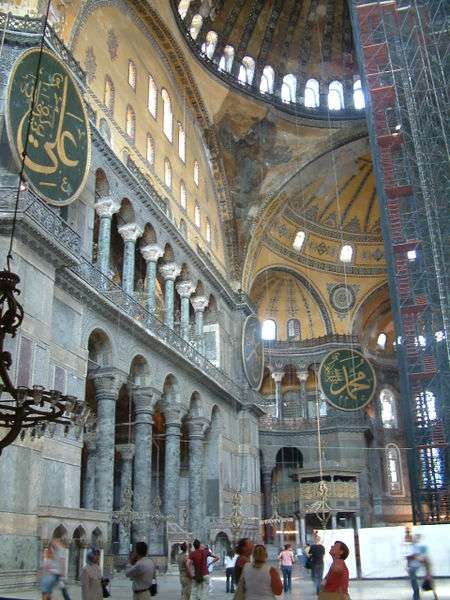 One pendentive of the Hagia Sophia main dome
One pendentive of the Hagia Sophia main dome
See also
References
- The Columbia Encyclopedia, sixth edition
- "pendentive (architecture) - Britannica Online Encyclopedia". Britannica.com. Retrieved 2012-08-15.
- Rasch 1985, pp. 129f.
- Heinle & Schlaich 1996, pp. 30–32
Sources
- Heinle, Erwin; Schlaich, Jörg (1996), Kuppeln aller Zeiten, aller Kulturen, Stuttgart, ISBN 3-421-03062-6
- Rasch, Jürgen (1985), "Die Kuppel in der römischen Architektur. Entwicklung, Formgebung, Konstruktion", Architectura, 15, pp. 117–139
| Wikimedia Commons has media related to Pendentives. |